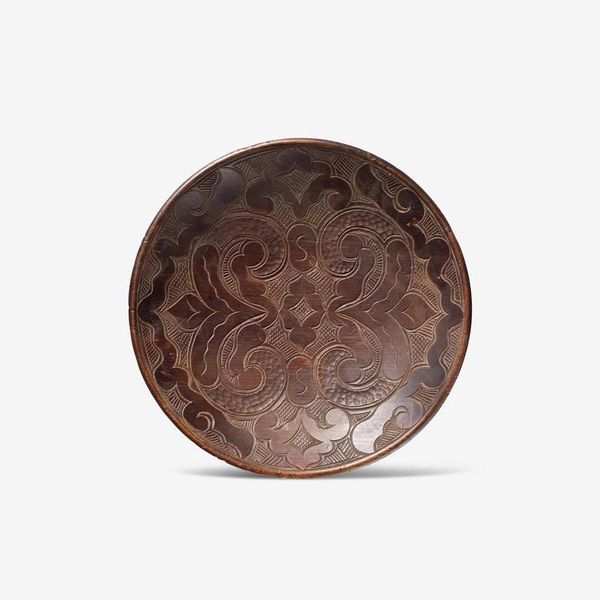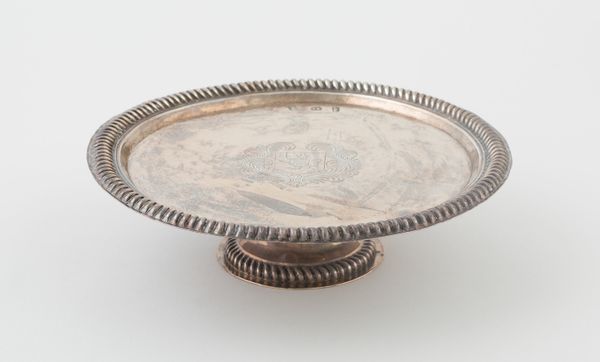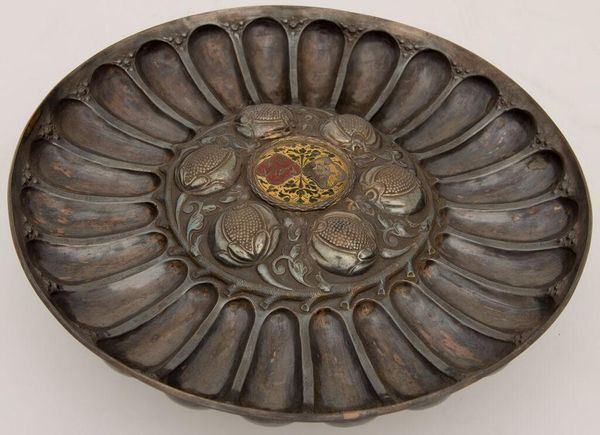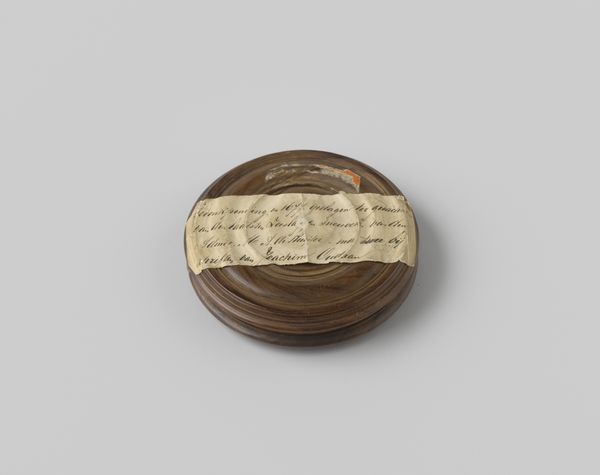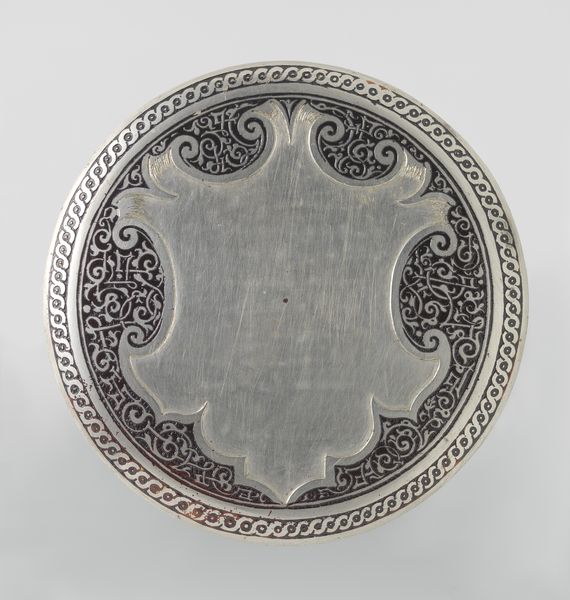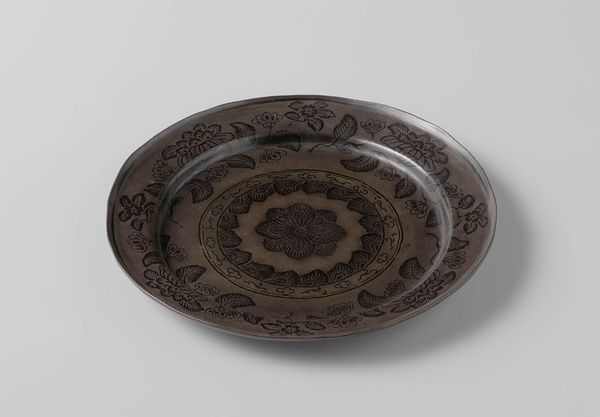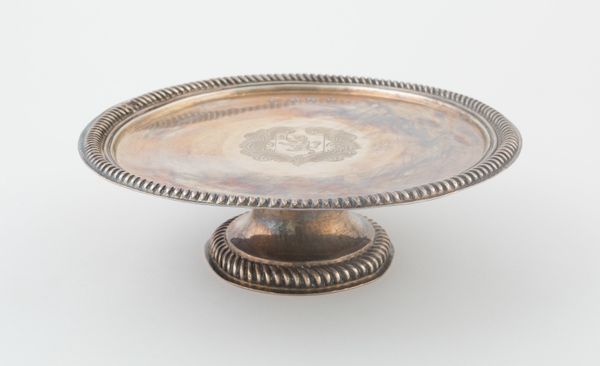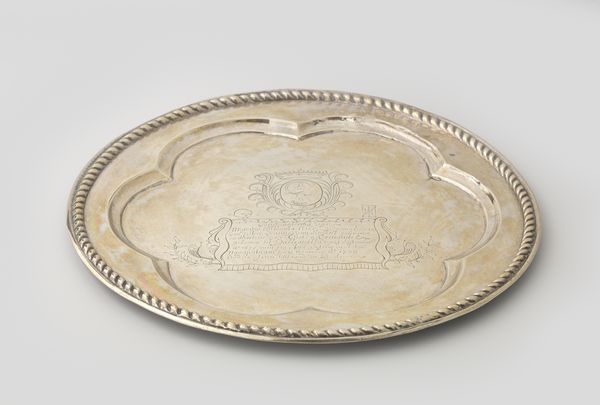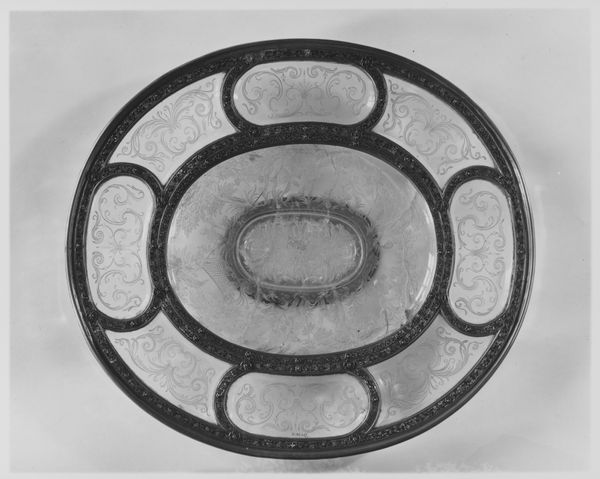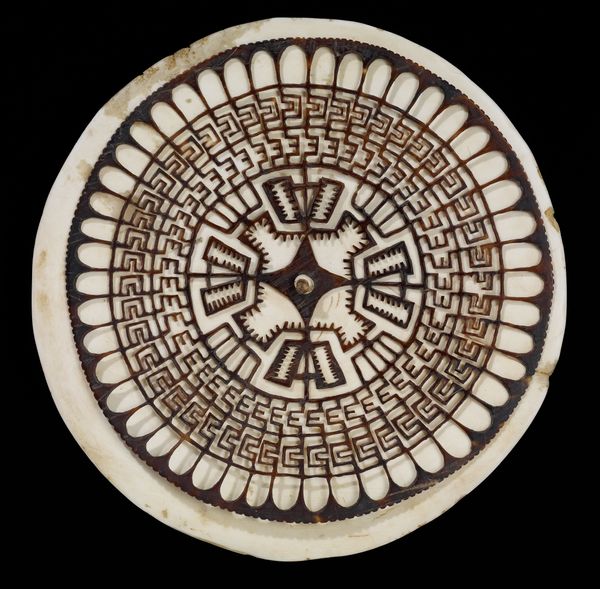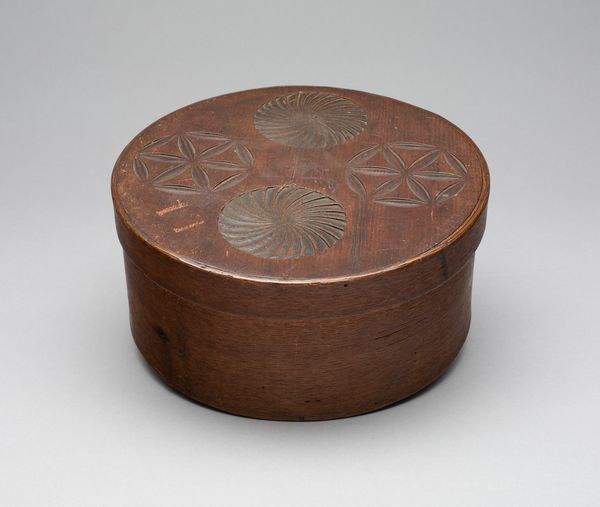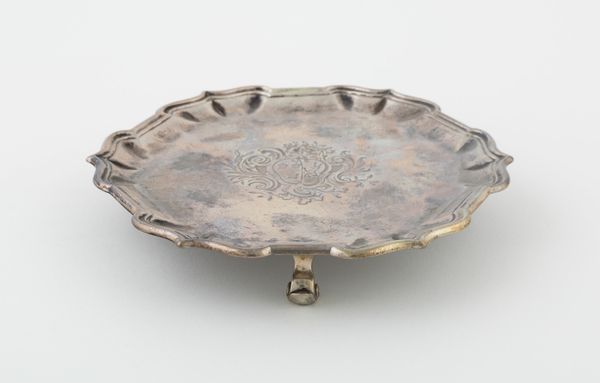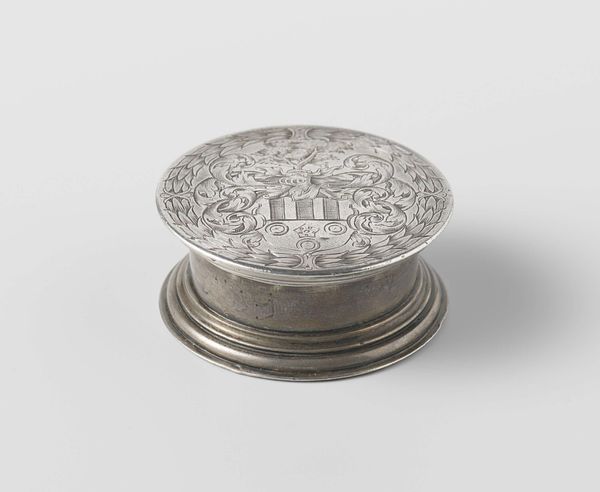
metal, engraving
#
pottery
#
metal
#
pattern
#
geometric
#
islamic-art
#
decorative-art
#
engraving
Dimensions: 9 1/2 × 14 1/4 × 1 1/4 in. (24.13 × 36.2 × 3.18 cm)
Copyright: No Known Copyright
Curator: This striking piece is known as the Oval plate, also named otcike. Dating back to the late 19th or early 20th century, this anonymously created work can be found right here at the Minneapolis Institute of Art. Editor: Okay, my immediate feeling is a kind of muted opulence. It’s a humble object—just a plate, really—but the intricate metalwork elevates it. The way light dances on the engraved patterns is pretty captivating, like visual ASMR almost. Curator: Indeed. Let's delve into the construction and its broader significance. The plate's medium is metal, and its creation involved meticulous engraving. Within Islamic art traditions, you find an extensive display of decorative art styles where craftsmanship isn’t just technical—it’s deeply embedded with cultural and spiritual narratives. The symmetry, the geometric arrangements… Editor: Ah, the geometry—it’s so perfectly balanced, yet, there’s something slightly organic about the flow of the lines, too. It feels meditative, like the artist was working in a trance, perhaps repeating sacred patterns as a form of devotion. I’m reminded of fractals—how the smallest details echo the larger design. Curator: Exactly. Such designs were rarely arbitrary; they're part of a visual language. Islamic art avoids representational imagery, leaning heavily on geometry, calligraphy, and vegetal patterns to symbolize the divine. This plate, though seemingly utilitarian, becomes a canvas for abstract spirituality and reflects the culture it emanates from. One might see in the repetition the egalitarian values, perhaps resisting hierarchical depiction by employing evenly spread figures. Editor: Yes! And doesn't it speak to a deeper cultural story about trade and movement? I mean, here's a decorative object likely made for domestic use, imbued with meaning—probably witnessing daily rituals, social gatherings, all those whispered conversations. The very idea makes it incredibly special and quietly subversive. Curator: It's a compelling reading. Viewing artifacts like this through an intersectional lens allows us to appreciate how artistry, everyday life, and the larger tapestry of socio-political realities all intertwine. Editor: For me, losing myself in the details like this connects me, oddly enough, to the creator across time and distance. Each imperfect line tells a story. Curator: Precisely. What starts as an oval metal plate becomes a rich intersection of art, history, and culture. Editor: It certainly challenges what we traditionally see as "art," nudging the definition and purpose, maybe even giving it a good shake.
Comments
No comments
Be the first to comment and join the conversation on the ultimate creative platform.
